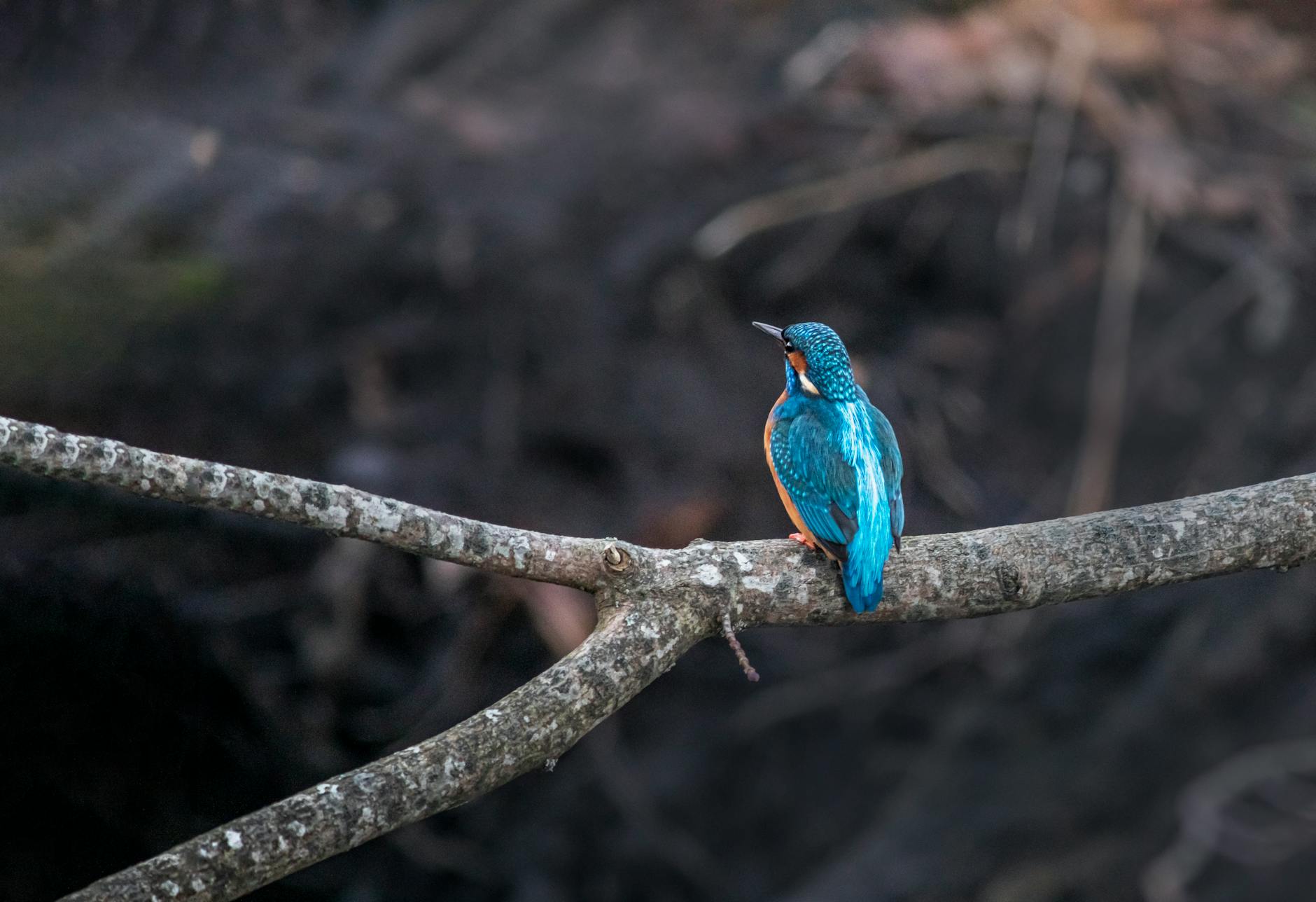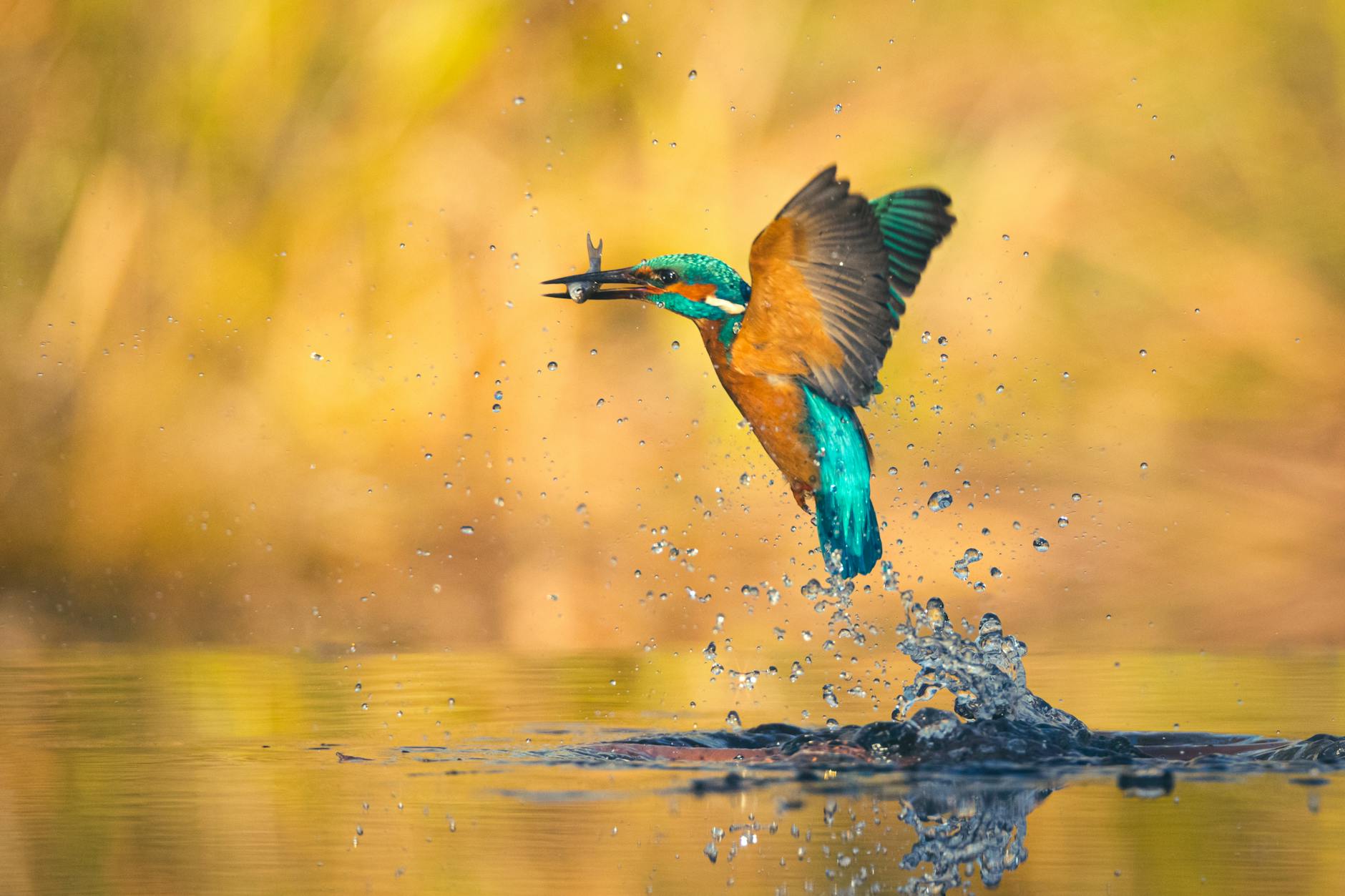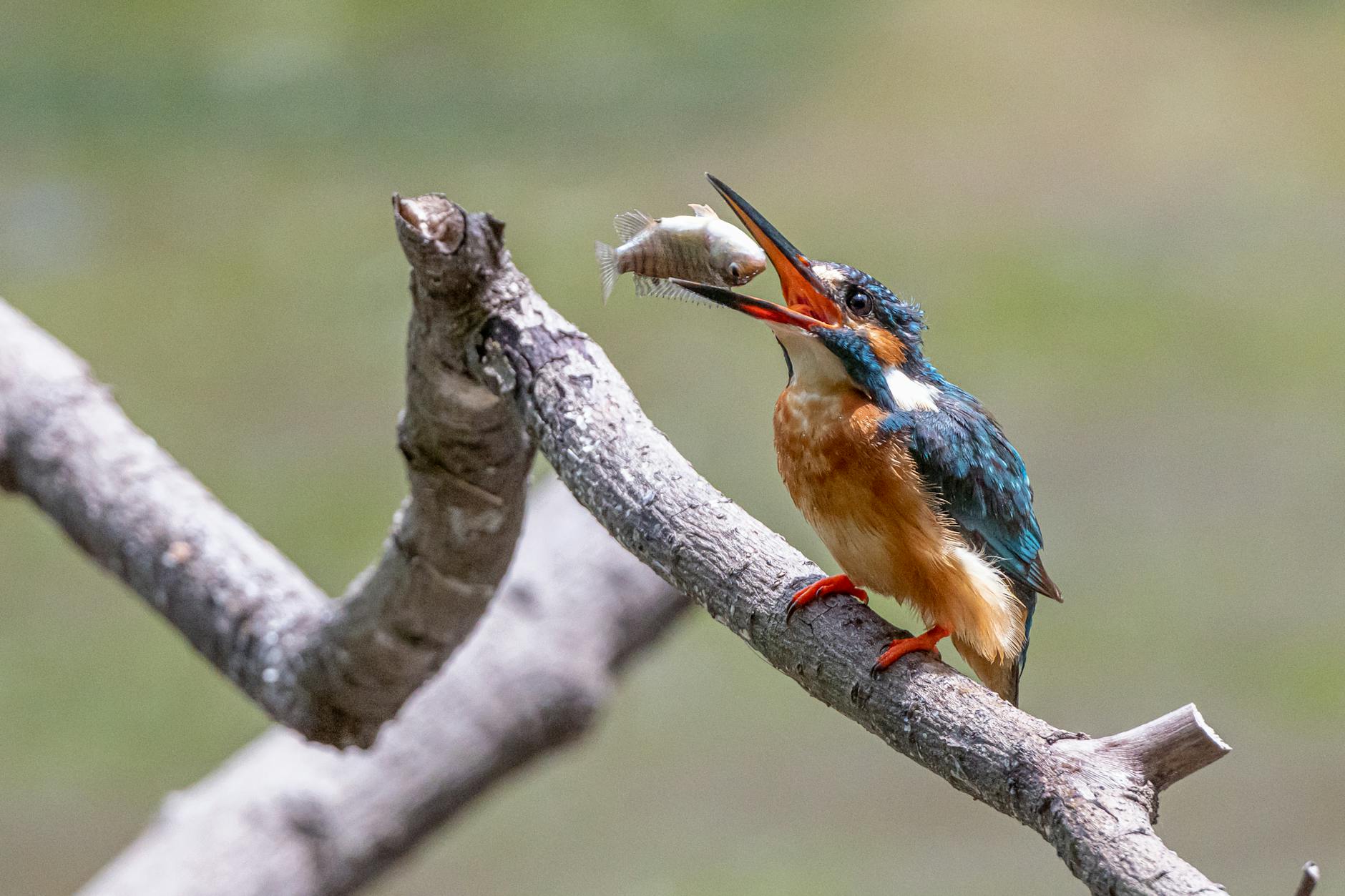Amazing Facts About Kingfisher Birds That Will Surprise You!
Kingfishers are some of the most vibrant and intriguing birds you’ll come across. Their striking colours and remarkable hunting skills make them a favourite among bird enthusiasts. But did you know these fascinating creatures possess some unique traits that truly set them apart from other birds?
In this post, you’ll uncover surprising facts about kingfishers that might change how you view these feathered hunters. From their impressive speed to their special adaptations for fishing, there’s much more to learn about these incredible birds. Ready to dive deeper into the world of kingfishers? Let’s explore the astonishing aspects of their lives!
Diverse Species of Kingfishers
Kingfishers are not just stunning to look at; the diversity of their species is equally fascinating. With approximately 90 to 120 species scattered across the globe, these birds belong to the family Alcedinidae. They exhibit a variety of sizes, colours, and behaviours, making them one of the most captivating groups of birds to observe.
Number of Species
There are around 90 to 120 species of kingfishers worldwide. Their distribution is diverse, with species adapted to different environments and climates. Noteworthy species include:
- Common Kingfisher (Alcedo atthis): This familiar species is popular in Europe and parts of Asia.
- Belted Kingfisher (Ceryle alcyon): Found in North America, this kingfisher is notable for its striking blue plumage and distinctive rattling call.
- Pied Kingfisher (Ceryle rudis): Recognisable by its black and white coloration, it can often be found hovering over waterways in Africa and Asia.
These species demonstrate the incredible adaptation of kingfishers to various ecological niches. For a detailed species list, visit Birds of the World.
Habitat Distribution
Kingfishers are primarily found near water sources, including rivers, lakes, and coastal regions. They thrive in diverse habitats across various continents, except for polar regions. Common locations where you might spot these vibrant birds include:
- Tropical Wetlands: Many species prefer lush, aquatic environments rich in fish.
- Freshwater Bodies: Streams and lakes offer excellent hunting grounds, making them ideal habitats.
- Mangroves and Estuaries: Coastal species, like the Belted Kingfisher, inhabit these areas where fresh and saltwater mix.
Some species even wander far from their traditional habitats, extending their range into unexpected territories, such as the Belted Kingfisher appearing in places like the Galapagos Islands. For more on their habitat preferences, check out Britannica.

Photo by Erik Karits
Unique Physical Characteristics
Kingfishers are not only remarkable for their behaviours; their physical features are equally astonishing. These birds exhibit several unique traits that enhance their hunting abilities and contribute to their striking appearance.
Vibrant Plumage
One of the most notable characteristics of kingfishers is their vibrant plumage. Their feathers display a dazzling array of colours, including brilliant blues, fiery oranges, and rich greens, often arranged in bold patterns. This colourful spectacle serves multiple purposes: it aids in camouflage against the vibrant backgrounds of their natural habitats, attracts mates, and can even intimidate rivals.
The colours in a kingfisher’s feathers are not solely due to pigments. Instead, they are a result of light interacting with specially structured layers of feather cells, which create vivid displays. This phenomenon means even duller lighting can make these birds appear radiant, making them a favourite among birdwatchers and photographers. For a deeper dive into the kingfisher’s plumage, visit Living With Birds.

Photo by Pixabay
Specialised Beak Design
The beak design of kingfishers is a marvel of adaptation. Their long, straight, and sharp beaks are perfectly suited for catching fish, which makes up a substantial portion of their diet. This specialised beak allows them to plunge into the water with precision, snatching their prey with the tip before returning to their perch to enjoy their meal.
The efficiency of a kingfisher’s beak doesn’t stop at catching fish. It’s also designed for minimal water resistance, allowing these birds to dive effortlessly. This streamlined form is not only functional but also a significant factor in their agility both in the air and underwater. For further insights into their beak adaptations, check out Adaptations for Fishing: Kingfishers’ Specialized Anatomy.
Third Eyelid Adaptation
Kingfishers are equipped with a transparent third eyelid, commonly known as a nictitating membrane. This remarkable adaptation aids in underwater vision. When kingfishers dive to catch fish, this membrane protects their eyes while still allowing them to see clearly beneath the water’s surface.
This adaptation not only improves their hunting success but also protects their eyesight from debris and other potential hazards in their aquatic environment. With sharp eyesight further enhanced by specialised glare-reducing cells, kingfishers can spot even the slightest movements of fish from above the water. For more on kingfisher adaptations, visit Kingfisher Adaptations – Birds.
Impressive Hunting Skills
Kingfishers are renowned for their remarkable hunting abilities. Their techniques for catching fish are nothing short of impressive and are a testament to their adaptations for aquatic hunting. From their diving expertise to their speed in the air, these birds have perfected the art of fishing.
Diving Techniques
Kingfishers employ unique diving techniques that enable them to catch fish with incredible precision. They typically launch themselves from a perch, using their sharp vision to spot prey beneath the water’s surface. When it’s time to dive, they use a technique known as “high-speed plunge.”
As they enter the water, their streamlined bodies reduce resistance, allowing them to penetrate the surface without causing too much disturbance. This is crucial because a sudden splash can scare off fish. What’s fascinating is that kingfishers have special adaptations, such as a set of genes that help them withstand the impact and avoid concussions during these high-speed dives. For more in-depth information on their diving techniques, check out Smithsonian Magazine.

Photo by Gerbert Voortman
Speed and Agility
Speed is another key component of a kingfisher’s hunting prowess. These birds can reach flying speeds of up to 25 miles per hour, which aids them in both hunting and evading predators. When they’re on the hunt, their swift movements allow them to adjust quickly to any changes in their surroundings or the behaviour of their prey.
This combination of speed and agility makes them incredibly effective hunters. They can dive into the water and emerge with their catch in just a few seconds. For insights on kingfishers’ speed and agility, see Vocal Media.
With these impressive skills, kingfishers stand out as exceptional hunters in the avian world. Their ability to dive with accuracy and their remarkable speed ensure their success in catching fish, making them a fascinating subject for birdwatchers and nature enthusiasts alike.
Breeding and Feeding Habits
Kingfishers exhibit fascinating breeding and feeding habits that contribute to their survival. Understanding how they care for their young and what they eat reveals much about these vibrant birds.
Nesting Practices
Kingfishers are dedicated parents when it comes to raising their young. They typically choose a nesting site close to water, which is crucial for the livelihood of their chicks. Their nests are usually built in burrows dug into riverbanks or sandy ground. Both male and female kingfishers participate in constructing the nest, creating a tunnel that leads to a chamber where the eggs will be laid.
During the breeding season, which lasts from March to July, pairs often have two broods, laying an average of 6.5 eggs per brood. After hatching, both parents share the responsibility of feeding the chicks. The young are fed a diet rich in fish and aquatic invertebrates until they are ready to fledge, which usually occurs around three weeks after hatching. For more details on how kingfishers build their nests, visit Scottish Wildlife Trust.

Photo by Carlos_Kingfisher
Dietary Needs
Kingfishers have hefty dietary requirements, consuming about 50 to 60 percent of their body weight daily. Their diet mainly consists of fish and other aquatic creatures. On average, they catch between 13 to 21 fish each day, depending on their size and species.
Insects, crustaceans, and small amphibians can also appear on their menu. They are skilled hunters, watching from a perch before diving to catch their prey with impressive speed and accuracy. For a detailed look into what kingfishers eat, check out Bird Fact.
The variety in their diet not only helps them thrive in diverse environments but also ensures the nutritional needs of their chicks are met during their early growth stages.
Cultural Significance of Kingfishers
Kingfishers are more than just beautiful birds; they embody significant meanings across various cultures. Often associated with peace, prosperity, and love, these vibrant creatures capture the imagination of many. Their striking presence has woven them into folklore, symbolism, and artistic representation around the world.
Symbolism in Different Cultures
Kingfishers hold various meanings depending on the culture. For example, in many Indigenous cultures, such as certain Native American tribes, the kingfisher represents peace and fertility. These birds are seen as symbols of harmony and are often featured in storytelling and oral traditions.
In Greek mythology, the kingfisher has a poignant backstory. It is believed that the gods transformed two distraught lovers into kingfishers, known as “halcyons,” which signifies divine intervention and hope after hardship. This narrative has contributed to the bird’s perception as a symbol of tranquillity and good fortune. You can read more about this here.
Additionally, kingfishers are often viewed as guardians of the ocean and water bodies. In Australia, the Sacred Kingfisher is revered for its connection to spirituality and the natural world. Their presence is thought to bring blessings and good luck, reflecting a deep respect for nature’s creatures. Explore more on their symbolic value in various cultures here.
Representation in Art and Literature
Kingfishers have been celebrated in various forms of art and literature throughout history. In Shakespeare’s works, the kingfisher appears as a symbol of beauty and fleeting moments, encapsulated in its ephemeral presence. For instance, references can be found in plays such as “King Lear” and “1 Henry VI.” Discover more about kingfishers in Shakespearean literature here.
Artists have also drawn inspiration from kingfishers. British wildlife artist Robert E. Fuller dedicated extensive research to capture the essence of these birds in his paintings. His detailed portraits reflect the photographer’s desire to portray the stunning beauty and unique characteristics of kingfishers. You can find more about his artistic process here.
Moreover, renowned naturalists like John James Audubon and artists such as Vincent van Gogh featured kingfishers in their work, showcasing their allure and significance across artistic narratives. Kingfishers thus serve not only as subjects of fascination but also as representations of deeper themes, such as mortality and immortality in human experience. For an intriguing analysis of this concept, check out this article.
Conclusion
Kingfishers are remarkable birds that offer a wealth of fascinating traits and behaviours. With around 90 species worldwide, their vibrant colours and exceptional fishing abilities truly set them apart. From their unique beak design to their incredible diving techniques, these birds continue to captivate nature lovers and scientists alike.
Take a moment to appreciate the beauty of kingfishers in your local area. Consider visiting a nearby lake or river to observe them in action or explore further fascinating facts online. What aspects of kingfishers surprised you the most? Share your thoughts and engage with fellow bird enthusiasts!










